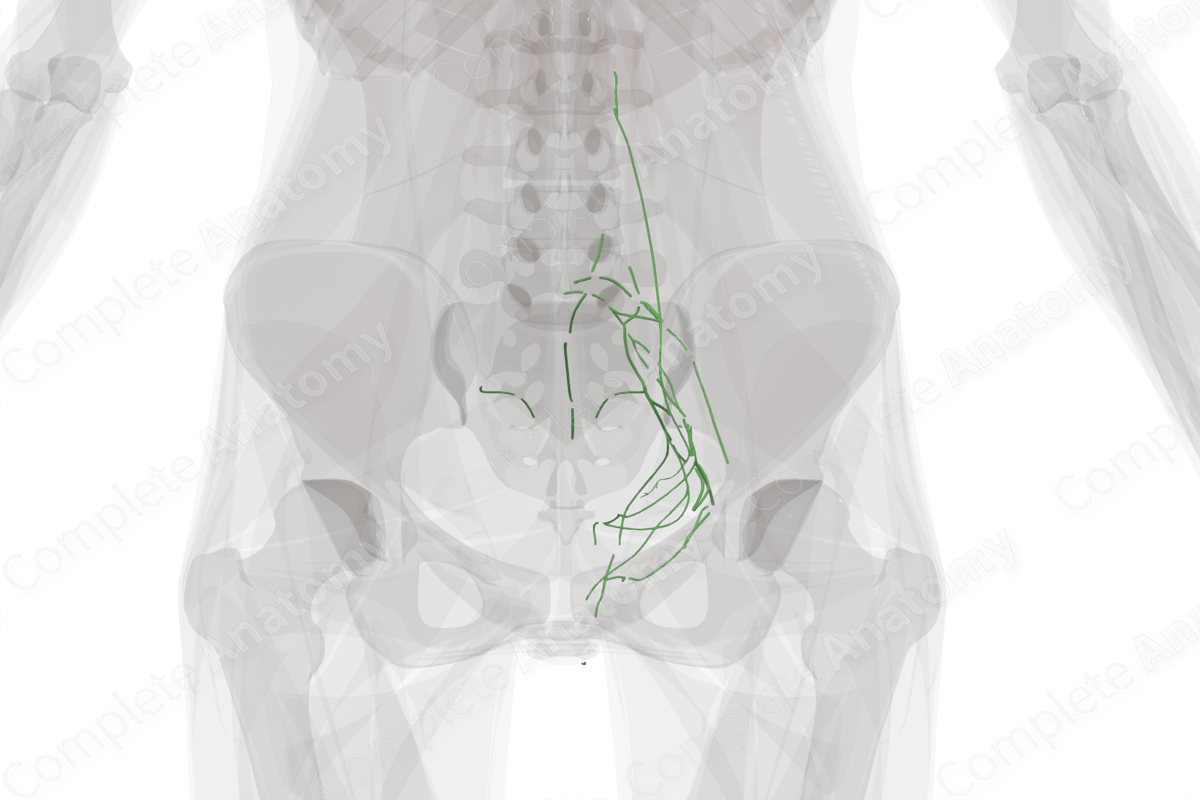
Description
The pelvic lymph vessels form a drainage system parallel to the pelvic blood vessels. The vessels are responsible for draining interstitial (or extracellular) fluid that has escaped from the cardiovascular system, as well as the removal of cellular debris, and returning it to the venous system as lymph.
Lymphatic drainage of the pelvis can be further categorized into parietal and visceral groups according to the lymph nodes they connect with.
The parietal pelvic lymph vessels include the common iliac, external iliac, internal iliac, gluteal, obturator and sacral lymph vessels. The common iliac lymph nodes and vessels are responsible for lymph drainage of the entire lower limb since they receive the internal and external iliac lymph vessels.
The visceral pelvic lymph vessels are associated with the viscera of the pelvic cavity and include the vesical lymph vessels of the bladder, parauterine, paravaginal, and pararectal lymph vessels.
Related parts of the anatomy




